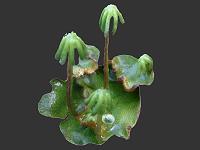Roscadghill Parc Wildlife - Plants
(95 species currently featured)

Algae, moss, liverworts, ferns and their allies. Ancient plants producing spores rather than seeds and very simple, often water dependant plant species, most liking some shade.
Grasses, Sedges and Rushes
Families of plants with mainly grass like leaves, that arise from a fibrous root system; but may sometimes arise from a bulb or tuber.
Bulbs and Corms
Group of plants possessing a storage organ to store food. Includes members of the amaryllis, hyacinth and onion families.
British Native Wildflowers
This section includes some of our best known wildflowers, but will cover many species that people call weeds, a number of which will most likely be found in peoples gardens.
Alien Weeds and Garden Escapes
Plants that either occur as garden escapes or have been introduced to the UK by various means, e.g. imported in bird seed. Images of commonly seen garden plants may be placed in this section.
Trees and Shrubs
This section includes both British native species and aliens and ornamental species separately. All plants here are ''woody''.
There are many important plant species here, important in how they benefit wildlife, not in a sense of rarity.
Plants provide habitat for many animal species. Trees and shrubs provide cover for birds, other plants may provide food; either nectar from flowers, leaves and roots to graze or sap to suck. Plants also release oxygen, which benefits human beings and most other living things.
Some species are considered 'weeds'. A weed is a plant that grows where it's not wanted; if we didn't have weeds we'd have far fewer animal species. Stinging Nettles are important for Butterflies, as Dandelions are for Bumble Bees; animals which are currently in decline.
A greater selection of images of plants can be found at APHOTOFLORA. A web-based educational photographic resource dedicated to the identification of plants found across South-west England by David Fenwick.
Contact - David Fenwick